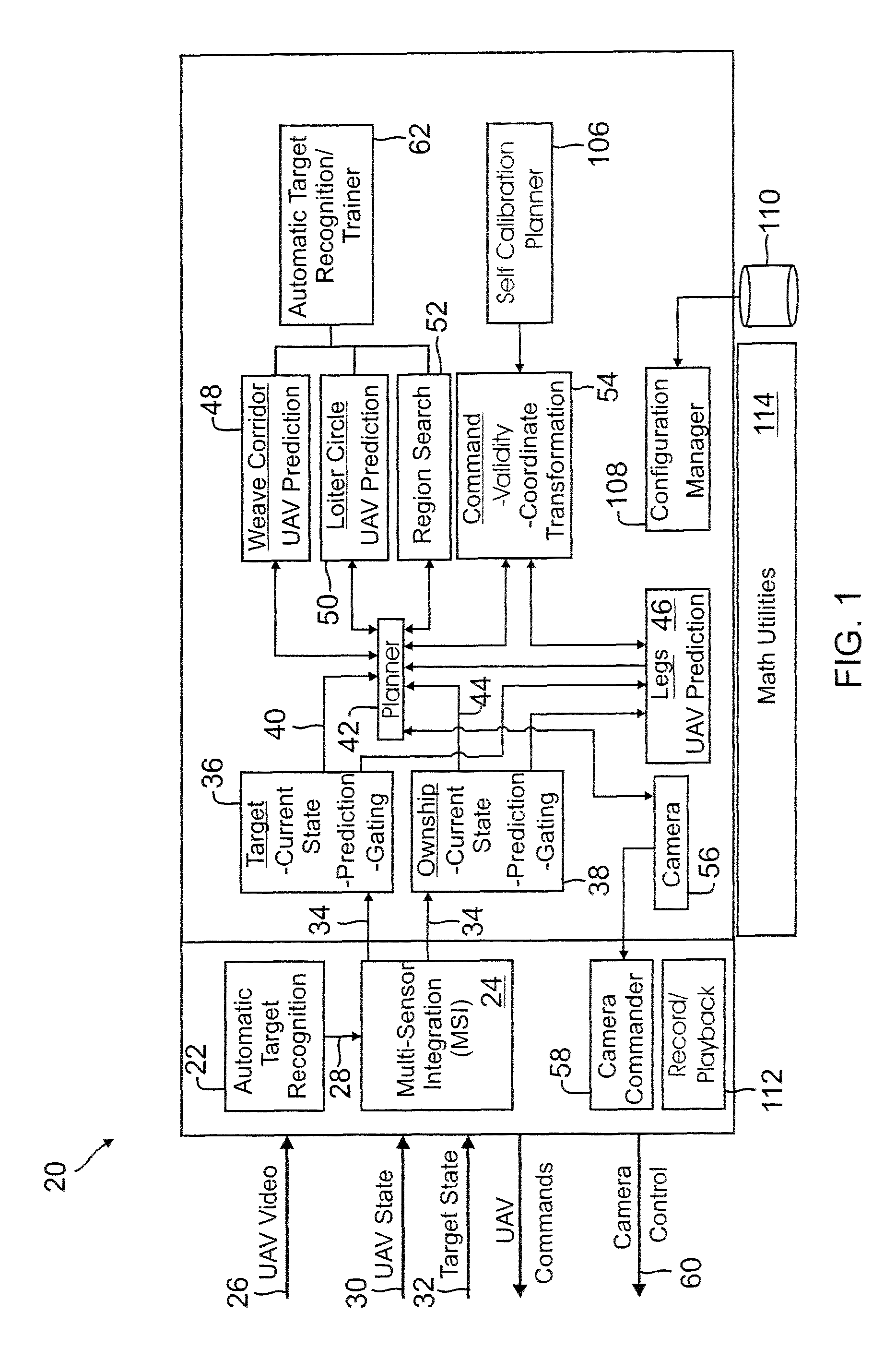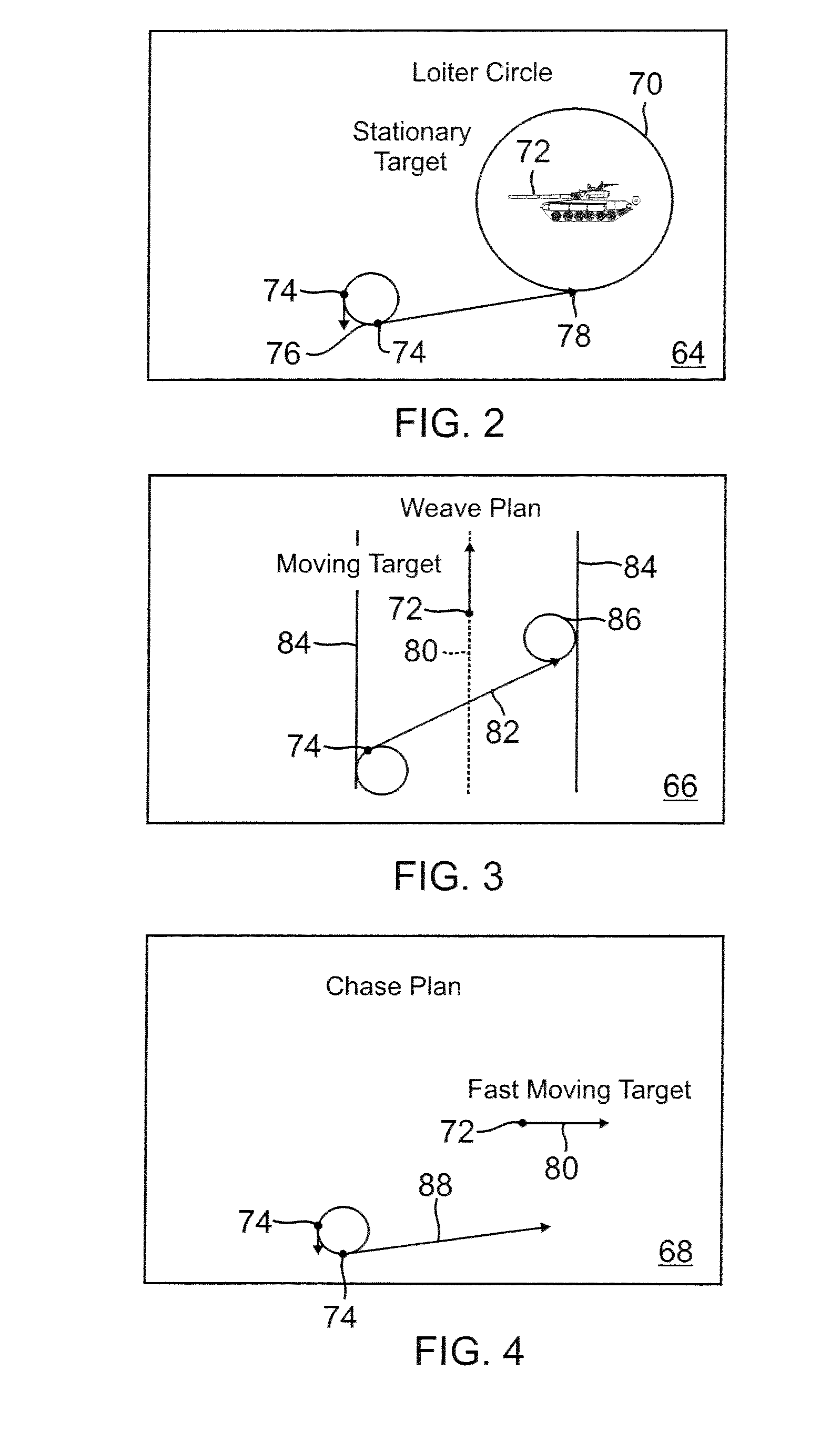System and methods for autonomous tracking and surveillance
a technology of autonomous tracking and surveillance, applied in the field of systems, can solve the problems of low efficiency, low cost, and insufficient support of real-time target attribute data collection, and achieve the effect of cost saving
- Summary
- Abstract
- Description
- Claims
- Application Information
AI Technical Summary
Benefits of technology
Problems solved by technology
Method used
Image
Examples
Embodiment Construction
”, one will understand how the features of the present embodiments provide advantages, which include a reduction in the number of human operators needed to operate the system, which in turn translates into cost savings, a reduction in the likelihood that tracked targets will be lost, a decrease in the risk that UAVs will be lost due to crashes / collisions, and a decrease in the risk that UAVs will enter no fly zones.
[0006]One aspect of the present system and methods for autonomous tracking and surveillance includes the realization that current systems for tracking and surveillance are heavily dependent upon human operators. This dependence upon humans is costly, and subject to losses of target / track data due to bad vehicle position or bad camera angle. Human error is frequently to blame for these losses. Accordingly, a system and methods for automating surveillance, targeting and tracking functions would save costs and reduce errors.
[0007]One embodiment of the present system for auto...
PUM
 Login to View More
Login to View More Abstract
Description
Claims
Application Information
 Login to View More
Login to View More - R&D
- Intellectual Property
- Life Sciences
- Materials
- Tech Scout
- Unparalleled Data Quality
- Higher Quality Content
- 60% Fewer Hallucinations
Browse by: Latest US Patents, China's latest patents, Technical Efficacy Thesaurus, Application Domain, Technology Topic, Popular Technical Reports.
© 2025 PatSnap. All rights reserved.Legal|Privacy policy|Modern Slavery Act Transparency Statement|Sitemap|About US| Contact US: help@patsnap.com



